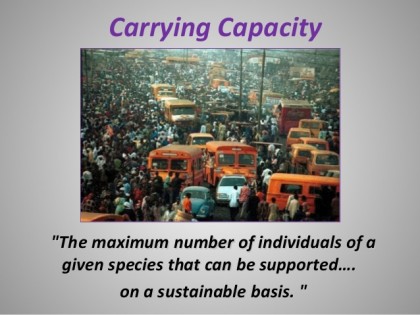 Population pressure plus expanding tourism is quickly pushing Sonoma Valley beyond its carrying capacity. This happened in the Napa Valley years ago, as anyone who has navigated Hwy. 29 in June or July has discovered.
Population pressure plus expanding tourism is quickly pushing Sonoma Valley beyond its carrying capacity. This happened in the Napa Valley years ago, as anyone who has navigated Hwy. 29 in June or July has discovered.
For those who commute to work in San Francisco or Oakland, exceeding carrying capacity creates a weekday nightmare; traffic on five-lane freeways literally moves at a snail’s pace. BART trains are jammed, for those lucky enough to find parking in a BART lot. A recent poll indicates one-in-three residents of the Bay Area is considering moving somewhere else due to stress and congestion.
The idea of carrying capacity is very simple; when any container, such as a sewer pipe or roadway, is forced to carry more volume than it can properly contain, turbulence and disruption arise. Turbulence can take the form of gridlock, the chaos of the inability to move. In the case of a sanitary sewer line, it takes the form of backed-up sewage flowing from manhole covers.
From a civic and social planning perspective, exceeding carrying capacity is akin to placing too many rats in a cage; when personal space shrinks too much people get angry, frustrated and edgy. Road rage is one extreme symptom; common rudeness and discourtesy are less dramatic but nonetheless affect mood and social stability.
Carrying capacity can be enlarged, of course, and in civic planning this revolves around insuring that land is made available for the increased need of housing due to population growth. If, however, the infrastructure that serves housing growth is not increased, the carrying capacity of community infrastructure is quickly exceeded. Tourism and hospitality both add temporary population surges which serve to push demands on infrastructure beyond the limits of its carrying capacity.
In 1964, regional planners developed designs for a four-lane Sonoma Valley freeway connected to an expanded network of North Bay freeways to increase carrying capacity. Rejected by the public, which preferred a small-scale, rural-style community, those plans were set aside. Today, this leaves our valley with two-lane Hwy. 12 running North/South through most valley towns, the only transportation corridor available to serve our area’s expanding use.
Our infrastructure is what it is; given increased demand and fixed capacity, is there a way to reduce the detrimental effects of exceeding our Valley’s carrying capacity? The answer is “Yes-But.” Solutions will include significant trade-offs; it’s impossible to please everyone, always.
One solution is to focus all new housing on creating rental housing for people who already work here – hospitality workers, teachers and fire department personnel, etc. – thereby reducing commuting. This means largely curtailing new single-family market-rate housing, now median-priced at over $600,000.
When it comes to tourism and the economy, it means reducing hotel growth and cracking down on vacation rentals which remove single family home rentals available to workers; offering free, high-speed internet availability which facilitates working from home and reduces commuting, and attracting tech-savvy employers who utilize such networked methods.
As for the environment, it means supporting and implementing non-polluting, electric, car-and-bicycle-share services to reduce private auto use and the acres of parking devoted to it.
Will these approaches curtail some types of opportunities? The answer is “yes.” But, either we live within the limits of our carrying capacity or suffer increasing painful consequences.





Be First to Comment